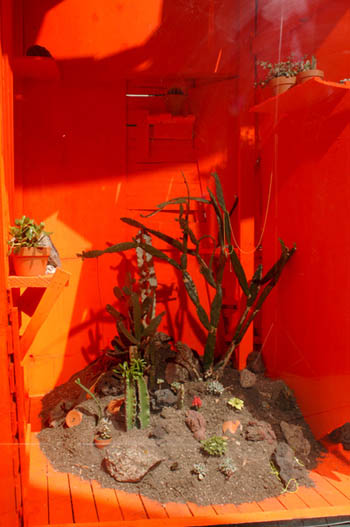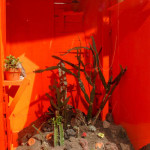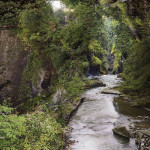By STEVE AISHMAN
Dust - To remove dust (as in cleaning)
Dust - To apply dust (as in fingerprinting)
Bound - Moving ("I was bound for Chicago")
Bound - Unable to move ("I was bound to my desk")
Buckle - To hold together (buckle your belt)
Buckle - To fall apart (buckle under pressure)
Assume - To actually have (To assume office)
Assume - To hope to have ("He assumed he would be elected.")
Fast - Moving rapidly
Fast - Unable to move ("I was held fast to my bed.")
Trim - To add things to (trim a Christmas tree)
Trim - To take pieces off (trim hair)
An antagonym is a word that can mean the opposite of itself. (Don’t bother looking it up, it's not in the dictionary.) We all use these words everyday and very rarely does anyone seem to have a problem with them because the words are entirely context driven. I have listed just a few of them, but I’m sure you could come up with a few more yourself if you think about it. (Citation, cut, oversight, fix, etc.) In old English, the word “awful” meant both something that was “awe-inspiring” in a good sense and in a bad sense, but over the years, one of the meanings fell out of use.
To me antagonyms represent the best part of language: that we get to make-up the rules of language and can even make rules that directly contradict each other. It seems to me that a specific, one-way relationship has developed between linguistic philosophers and artists. I get the distinct feeling that many artists are waiting for linguists to develop a new vocabulary that can then be applied to analyzing art, just as linguists did in the 1970’s with deconstruction, Orientalism, etc. I also see many artists that are purposely making work that can be discussed with the current vocabulary.
Now there’s nothing wrong with making work that people already have a vocabulary to discuss (after all, I make a lot of work that is designed to be digestible). But shouldn’t there also be visual artists be making work that inspires writers to develop a new vocabulary?
In other words, artwork that is not about modernism or post-modernism or any other “ism” because language breaks down when the work is viewed. The problem with work that is designed to cripple the current vocabulary of analysis is that no one is willing to write about it because it is too hard. It is far easier to explain how a piece of artwork already fits into a vocabulary that people understand.
Well, I know I’m interested in reading art criticism that does not try to translate artwork into an already extant way of thinking, but has to invent a language and then try to explain the rules of the new language. Unfortunately, this is a high-risk proposition and with high-risk comes a huge chance at failure.
Oh well, here goes …
Looking at Amir Fallah’s work at Rhys Gallery, it’s too easy to simply state that his work combines low-art and high-art. I’m sick of the binaries that reduce complex ideas to simplistic one-liners. Fallah’s work situates itself to obliterate a binary way of thinking. The work is an antagonym that encapsulates many meanings that exist simultaneously and in direct contradiction to one another. There aren’t layers of meaning in Fallah’s work because the meanings are not separate. There is just one big meaning. It’s not fine art that stems from street art or vice versa, its art that says that the two are the same thing and yet exact opposites at the same time.
Noriko Furunishi’s piece at Samson Projects functions in the same way. It’s too easy to say that Furunishi makes work that fuses foreground and background to destabilize how we experience the natural world. Her work speaks much more to an antagonymistic view of the world where landscape can hold contradictory notions simultaneously and seamlessly. Not just visually in terms of foreground and background, but conceptually as human notions of the Earth as provider and as slave become increasingly the same notion.
In fact as I look around, I see more and more artists working along a similar notion of antagonym that seems pervasive in the contemporary condition. How many binaries that used to be so clear, can you think of that have now merged into antagonyms over the past few years? (Us/them, good/evil, etc.) Now using a binary vocabulary to delineate certain things may still be a good idea, but maybe it is time for another vocabulary as well. Maybe by looking at art with many different lenses that don’t have names yet, we can stop only using the analytical vocabulary of binaries taught to us by the linguists of a previous generation and open new doors of interpretation.
- Amir Fallah, Sheltered, paint, found wood, plexi, soil, cacti and succulents, ceramic pots, and panties, 2007
- Noriko Furunishi, Untitled (Waterfall), chromogenic print, 2007
Fallah image courtesy of the artist and the Rhys Gallery.
Furunishi courtesy of the artist and Samson Projects.






